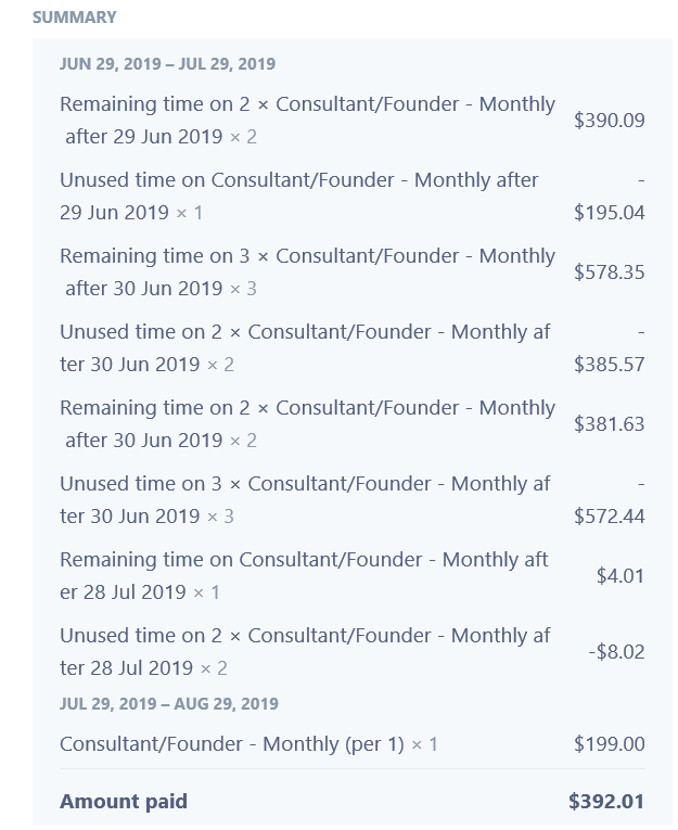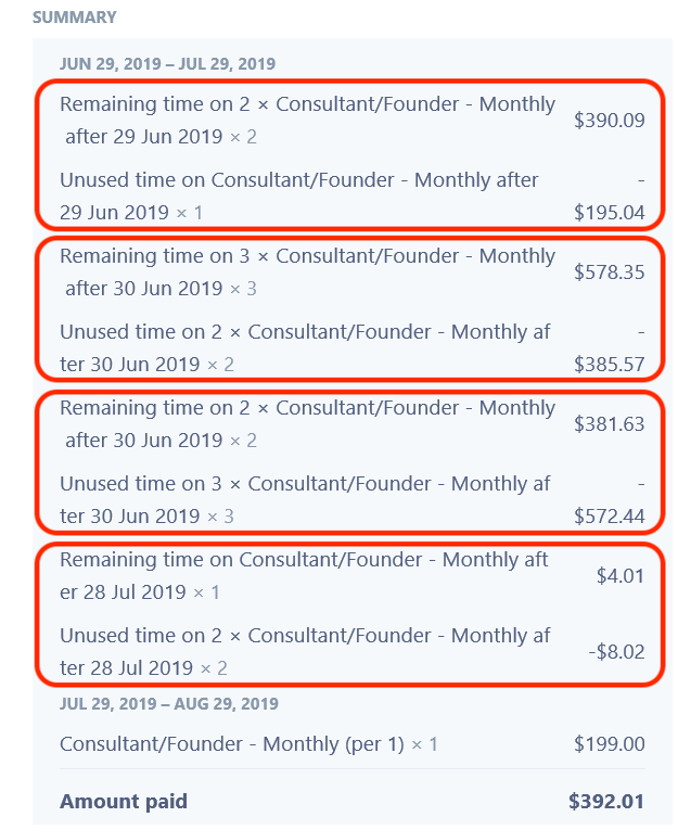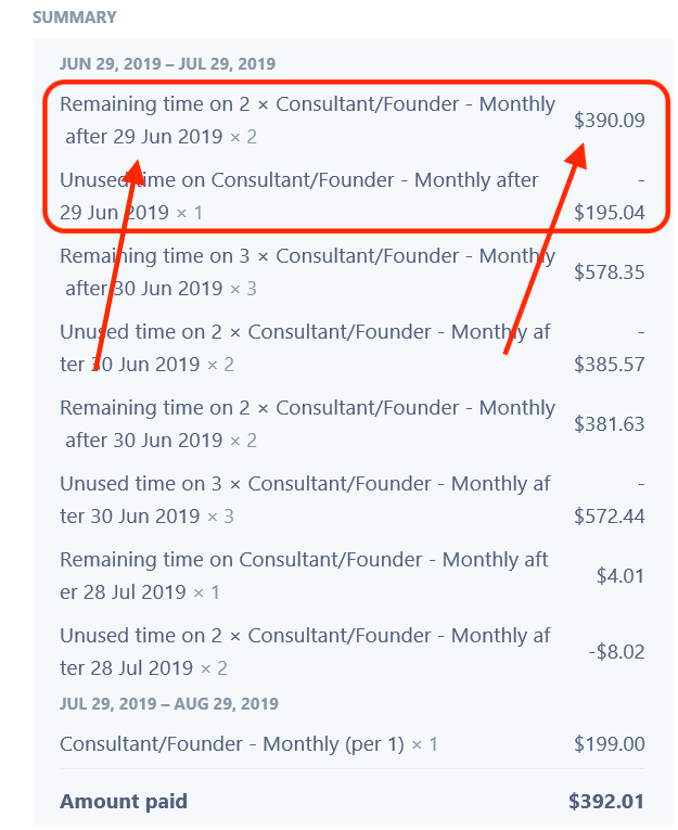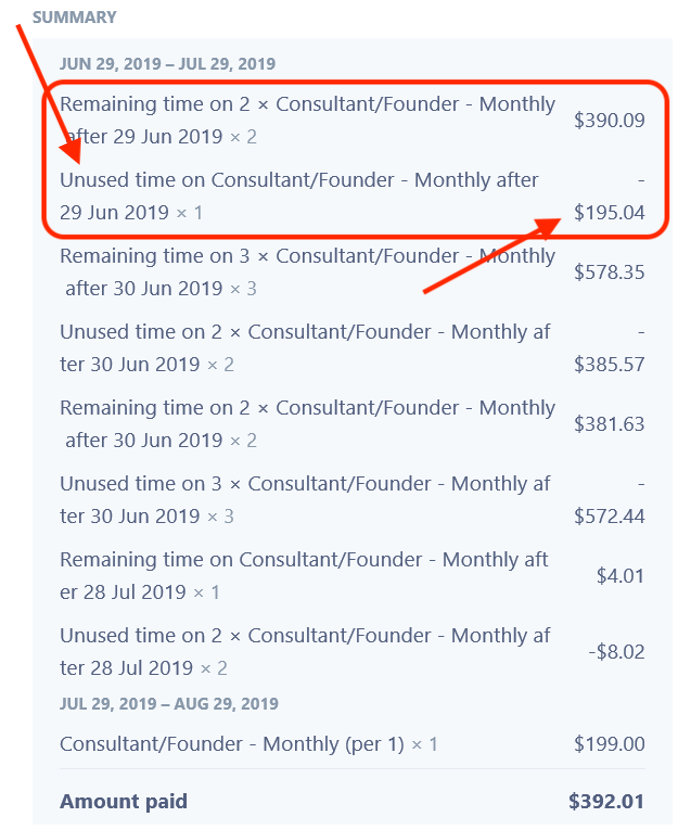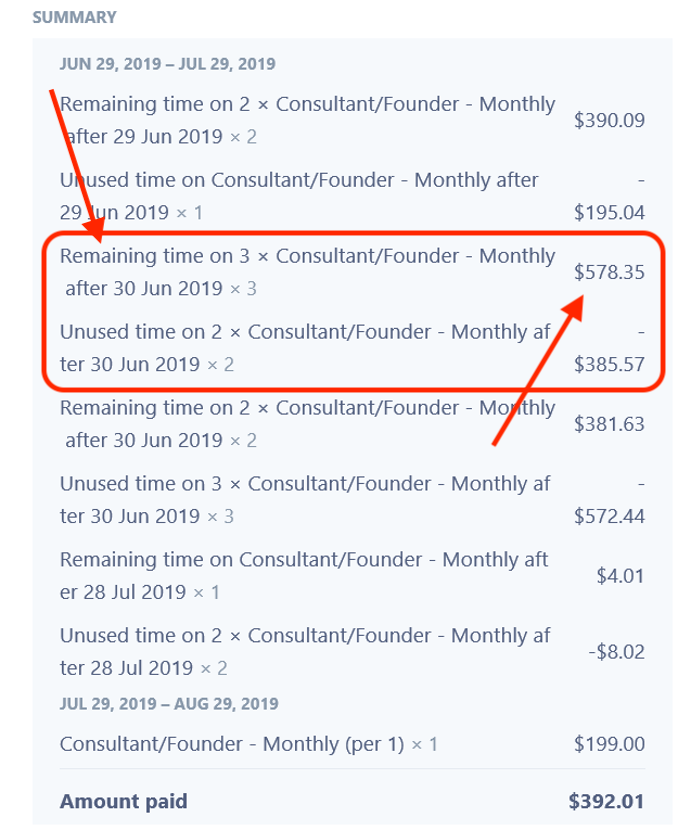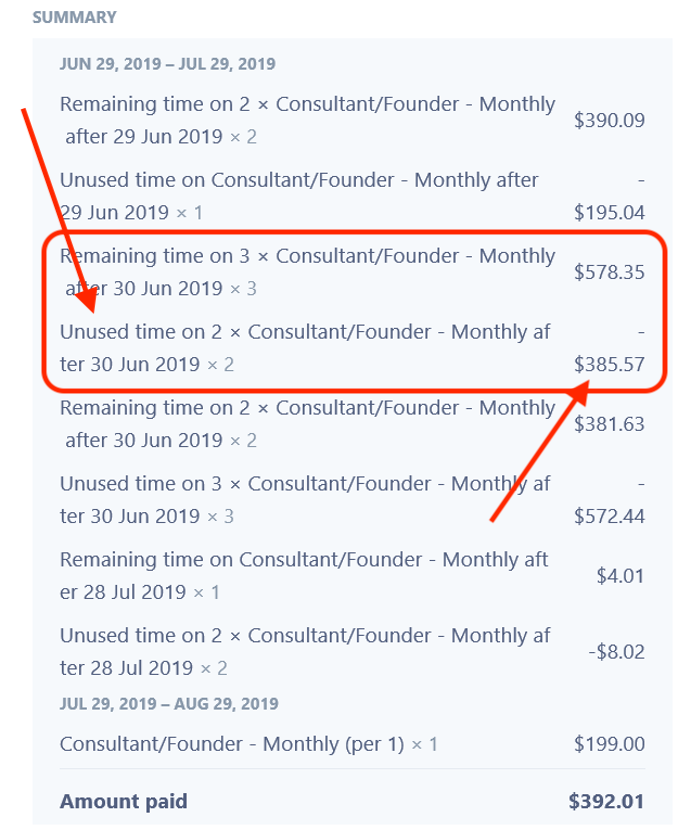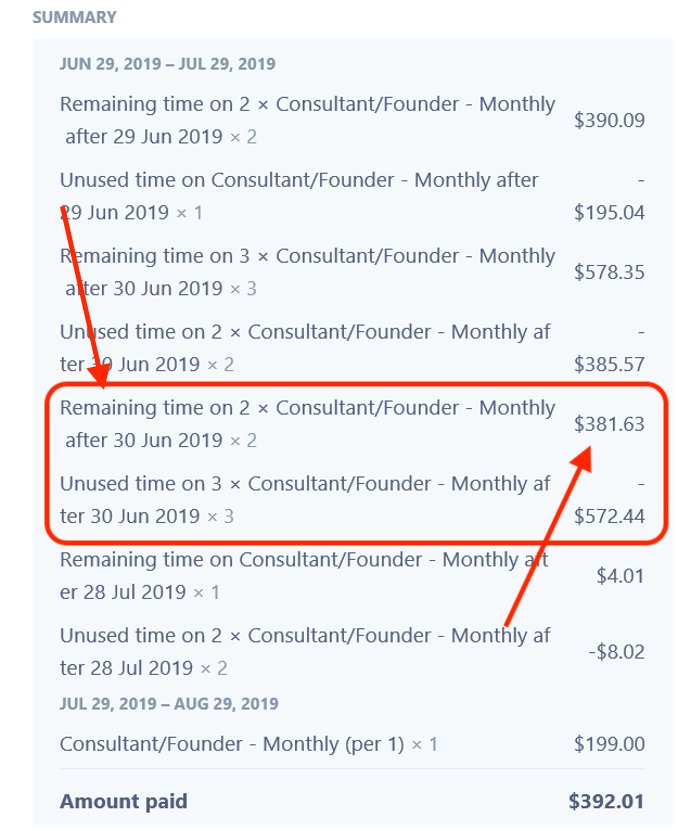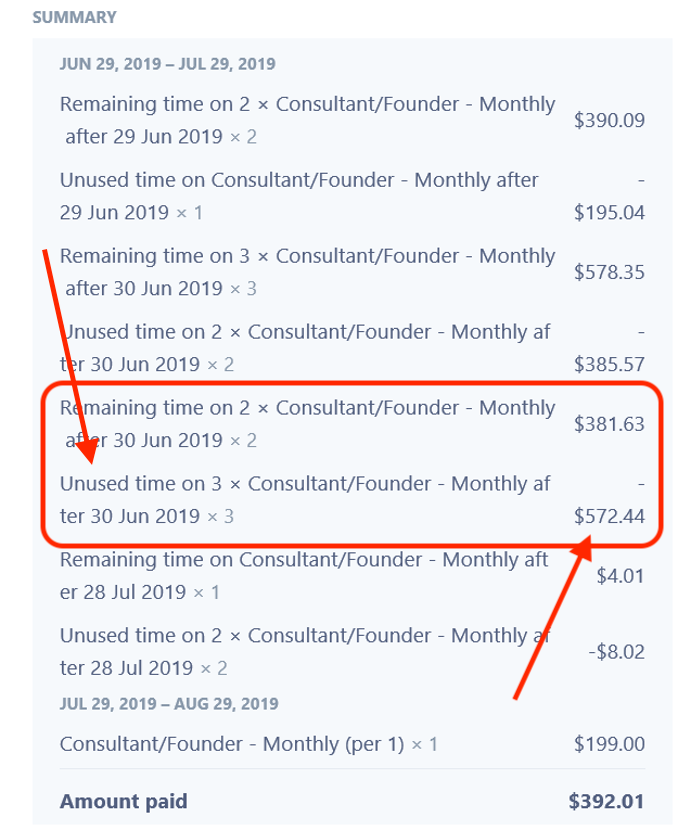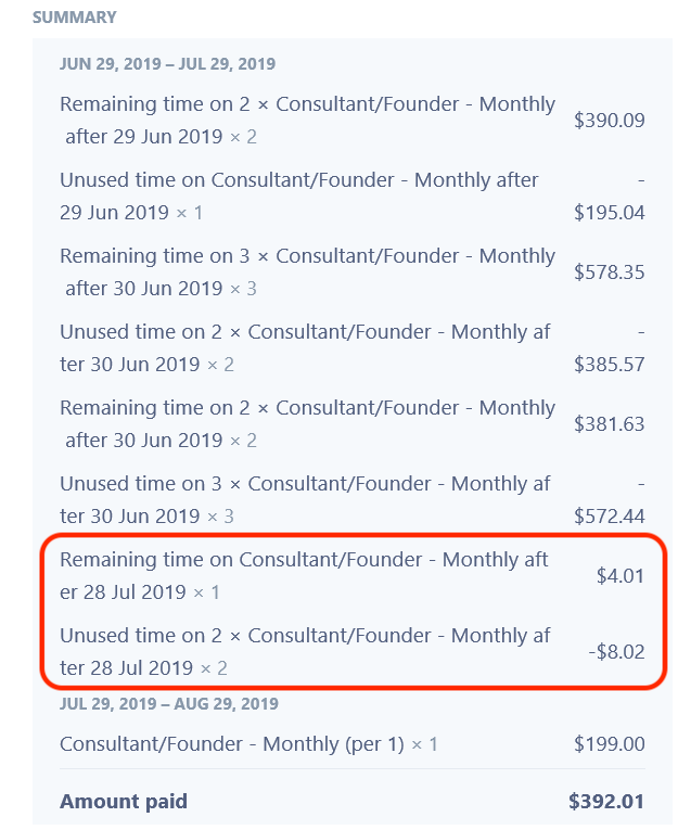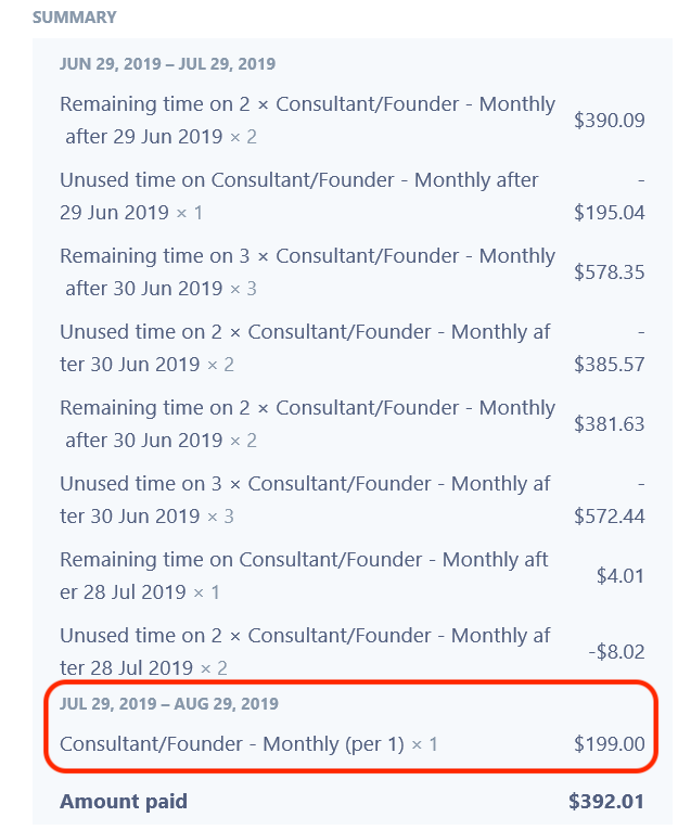Understanding Your Invoice
If you are doing alot of adding and subtracting LinkedIn profiles or upgrading/downgrading your account throughout the month, our system does a very good job of tracking this activity. However, your invoice may be difficult to read at first. Here’s a guide to understanding your invoice.
Step 1
Here’s what your invoice may look like. Never fear! We are going to explain it.
The first thing to understand is that at the beginning of each billing cycle, the customer is billed for the coming month according to their current usage.
For example, if the customer has one LinkedIn profile attached to their account, and they are on a $199/mo. plan, they will be billed for $199 at the beginning of their cycle.
If this customer adds/deletes profiles and/or upgrades/downgrades plans over the course of this billing cycle, the system will track the precise usage, prorate it accordingly, and add it to the customer’s next invoice, billing only for what the customer uses.
It’s worth noting that the minimum billing amount is the base rate for the selected pricing plan – in this example the customer is on the $199 plan. The only way to avoid the minimum charge is to cancel the Prospect Maximizer account.
Ok, let’s get on to the task of explaining how the invoices work…
Step 2
The sample invoice shown here is one that the customer received on July 29th.
The easiest way to understand the invoice is to look at it in pairs of rows.
Step 3
Let’s start with the first entry.
This customer’s previous billing cycle began on the 29th of June.
On June 29th, only a few hours after the beginning of their billing cycle, this customer added a second profile to their account.
The $390.09 on the invoice here represents the monthly cost of having two profiles ($398.00/mo), prorated for the remaining time left in the monthly billing cycle.
Step 4
Moving on to the next entry, since the customer added a second profile and is now being billed for two profiles, the system is closing out the previous billing plan for a single profile.
Since the customer only used a few hours of time with a single profile (and is now being billed for two profiles), the system is crediting their account with $195.04 for the prorated remainder of the month of unused time at the single profile rate of $199/mo.
Step 5
Moving on to the next line item, on June 30th, the customer added a third profile to their account.
So the system changed their plan to bill for three profiles at the rate of $199 per profile per month($597).
The $578.25 on the invoice represents the cost of three profiles ($597) prorated so the customer is only billed at this rate for the usage remaining in the monthly billing cycle.
Step 6
The next line item you see here is, again, the system closing out the previous billing rate (because the number of profiles has changed again – this time from two to three profiles.)
The amount of $385.57 represents the credit the customer’s account is receiving for unused time for the remainder of the monthly billing cycle at the previously established billing rate of $398 per month for two profiles.
Step 7
The next thing you’ll see on the invoice is that the customer then deleted their third profile and went back down to two LinkedIn profiles attached to their account.
The $381.63 is the prorated amount for the remainder of the monthly billing cycle at the two profile rate of $398/mo.
Step 8
After that is – you guessed it – the system reimbursing the customer’s account in the amount of $572.44 for the unused time for the remainder of the month at the previously established rate of $597/mo. for three profiles.
Step 9
Then, the invoice shows that on July 28th, one day before the end of the billing cycle, the customer deleted their second profile, leaving only one LinkedIn profile remaining attached to the account.
So, the billing system prorated the few remaining hours in the monthly billing cycle for a single profile in the amount of $4.01 and simultaneously issued a credit for the prorated amount ($8.02) that would have been billed if the customer had left two profiles on their account for the remainder of the cycle.
Step 10
Lastly, the system billed for the coming month at the rate of $199 per month for a single profile because the customer is on the $199/mo. plan and currently only has one (or less!) LinkedIn profile(s) attached to their account.
As you can see, the system does a very good job of tracking and prorating precise usage. Hopefully this explanation helps make the invoices easier to understand. Use the “Contact Us” page on this site to reach us if you have remaining questions.
